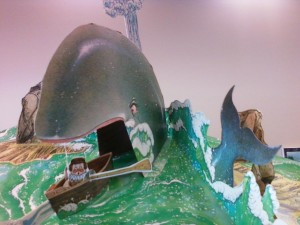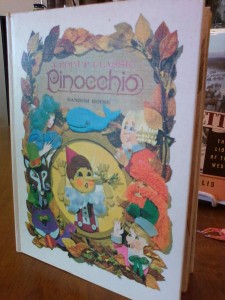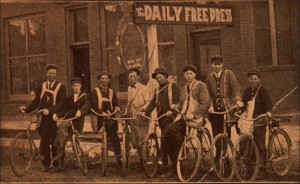When the Lord called Sherman Merrill, it was usually Long Distance. And the first call came early. As a newly-married 22-year-old Sherman was already in His service, leading a congregation at Whitehall, New York, the same town where a fleet of vessels was built to confront the British during the Revolution.
As a result of that latter fact, Whitehall is said to be the birthplace of the US Navy. It certainly was the starting point of a long career for Sherman Merrill, son of Elam, son of Benjamin, son of the immigrant Nathaniel Merrill, who had come to America during colonial times. It was a small town, Whitehall, and still is – located across the state line from Vermont, where the twins Willie and Alice would later be born.
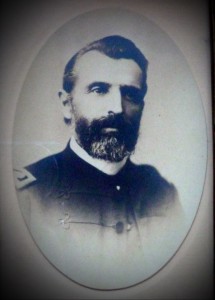
The son of a long line of farmers, Sherman took up the cloth and found his first flock and a home with his young wife Cordelia around 1850. Things were looking up.
But the Lord kept calling.
Baby Adalaide was just two when a church in Massachusetts needed a pastor, and it was a short two years later when an invitation came from a congregation in Vermont. By the time his mission brought him back to New York state and the birth of baby John, Sherman headed a family of seven. In 1860, the family resettled in Greenwich, New York, already an important – if secret – stop on the Underground Railroad that carried slaves to freedom from the American South.
Then came the war.
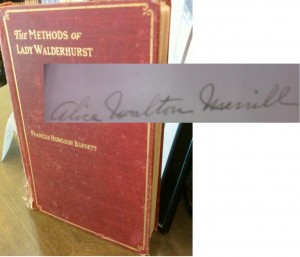
Pastor Merrill was older than some of his comrades-in-arms, but he again offered his services when volunteers were sought for a troop of up-staters. The 177th New York Infantry marched down from New York to New Orleans, Louisiana to join the 3rd Brigade serving under General Sherman.
They took part in skirmishes at McGill’s ferry and Pontchtoula. 23 of Chaplain Merrill’s fellow volunteers lost their lives during the siege at Port Hudson. 149 others died of disease. Still, he never lost his faith.
When the war ended, Merrill rejoined his family and relocated them to Wisconsin, a move that was little more than a layover on their way to Gallatin, Tennessee. The Major was invited by a congregation in that city to head their Methodist Episcopal church. Cordelia Merrill, who spent her life raising children and keeping house for Pastor Merrill, left the family behind when she was buried in the Gallatin Cemetery.
Remarriage was common, particularly when there were young children in the home. And that brings us to the point of this little story.
Sherman Merrill married John Walton’s daughter, Susan, a girl half his age. Together they had three daughters – one of whom they named Alice – who grew into an artist who loved to read. Alice signed her name in a book that landed in the bookshop yesterday. You may recall there is an Alice Walton who is the tenth richest American. The daughter of Sam the Walmart man. I wondered if there was a connection.
There wasn’t.
Which presented the question: How did a copy of The Methods of Lady Walderhurst by Frances Hodgson Burnett (she also wrote The Secret Garden, from which a movie was made) – how did the book get to Broken Arrow from Gallatin, Tennessee?
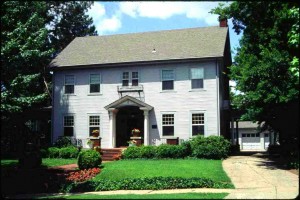
As it turns out, it was by way of another New York native. Dr Les A. O’Brien found Alice in Tennessee, married her, and moved to the Indian Territory to open his practice. Tulsa was a booming community and the draw was strong enough that the in-laws packed up and moved west to join Dr and Mrs O’Brien. Later, Dr. O’Brien wound up moving his offices up the road to Skiatook, but the Waltons remained in Tulsa.
South of town, near Muskogee, a family named Clinton married into the Creek Nation and did well enough on their ranch that they opted to build a big place on the hill in Tulsa. Dr Fred Clinton and family made their home near 13th and Boulder while brother Lee constructed a mansion a half-mile to the west. His house sits there still, completed in 1913 at 1322 South Guthrie and now sitting on the National Register of Historic Properties.
Alice Walton Merrill’s sister Susan lived there. She had married Mr. Clinton, a banker of some note, and already a driving force in the growing city.
Alice and her sister Susan were included in the 1914 Who’s Who in America, which made note of their artistic and philanthropic works and identified them as belonging to the Methodist Episcopalian church.
Which did their daddy Pastor Sherman proud.
The book?
It’s a First Edition copy from 1901. A little threadbare – even for a 100+ year-old. Not so valuable as a result.
But it tells a tale all its own.
Come visit!
McHuston
Booksellers & Irish Bistro
Rose District
122 South Main Street
